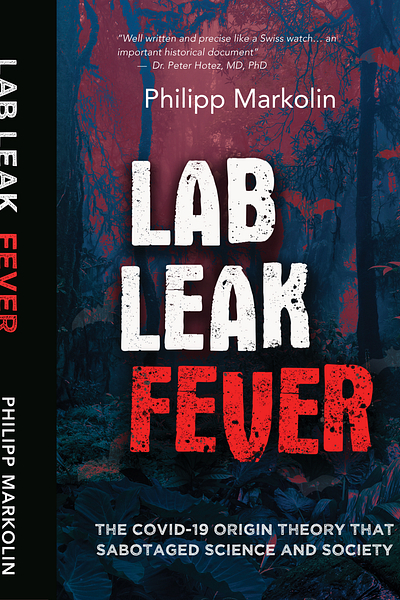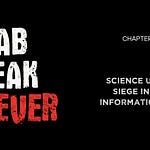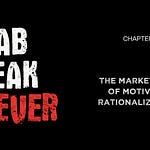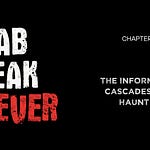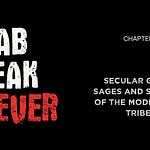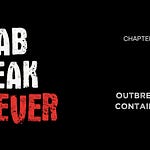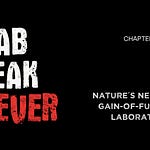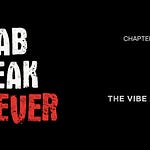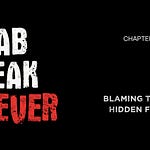Note: This is a freely accessible serialized version of Lab Leak Fever. Audio voiceover was AI generated for accessibility. Find an overview of all chapters here or consult the book website for further information.
A disturbingly dry cough broke the silence of the Malaysian night; the pigs resting under the mango trees had been uneasy that day. Loud, whooping breaths filled the backyards of small farmhouses. Pig farming had been a family business in the villages of Bukit Pelandok and Sikamat, and for the Foochow Chinese, it was a source of pride and good income. While most Malay are Muslim and not permitted to touch pigs, for Mr. Yap, handling these animals would feed his family of five, the youngest just three years old. The pork supply chain had recently exploded into a huge industry in Malaysia, employing thousands and lifting many more out of poverty. Within the lush and dense green vegetation, small streets connected scattered farmhouses, and the many small pig operations that originally started in backyards kept expanding, requiring more space and cultivation of the land.
Mr. Yap’s days were humid and hot, but the nights were pleasant, and he would often sit outside until the tropical sunset. A brighter and more hopeful future lay ahead for the immigrant family. He had felt a bit tired the last few days, and then he developed a fever on that fateful Monday in March 1999. A week later, he fell into a mysterious coma, never to wake up again. He would not be the only one.
“My father died of Nipah virus,” Wee Chee revealed timidly. “So did my uncle.”
Mr. Yap’s then-three-year-old daughter was sitting in front of me 23 years later. She was tall with straight hair, and her large round glasses amplified her intelligent mocha eyes, exuding curiosity. She was a young researcher on her journey to earn a PhD in virology at one of the best labs in Singapore. “I don’t remember him; I was too young.” Her soft voice and casual tone were in stark contrast to the severity of the revelation about her father. I felt a bit uneasy interrogating her about the painful past, but I needed to understand what drove her to be out here with the other virus hunters.
“The authorities first thought it was Japanese encephalitis,” she explained, a virus transmitted by mosquitoes. The year before, after the first unusual encephalitis casualties in 1998, the pig farmers in Malaysia received vaccinations. Despite taking mosquito protection measures, the outbreak continued unabated, and the death toll skyrocketed. Something did not add up. Although some of the initial patients demonstrated cross-reactivity with Japanese encephalitis antibodies in serological assays, indicating their recent exposure to the virus, not all patients tested positive. Some would even get sick after being vaccinated against the Japanese encephalitis virus. These cases were attributed to an ineffective vaccine — something almost unheard of. Confused, the department heads were more concerned with confirming Japanese encephalitis through PCR tests rather than challenging their assumptions. In the meantime, the authorities would continue with their prevention measures, even telling the pig farmers it was safe to keep working. Wee Chee’s father trusted them despite knowing his pigs had died too.
However, Dr. Kaw Bing Chua, a tenacious local scientist had developed a hunch that it was a new virus that caused the disease, jumping over from pigs to farmers. With a subtle tone of admiration in her voice, Wee Chee briefly recounted his history. He would isolate the virus from the cerebrospinal fluid of patients and attempt to cultivate it not only in insect cell lines, as is indicated for the Japanese encephalitis virus, but also in human, canine, pig, and monkey cell lines available at the University Malaya Medical Center. He discovered that the isolated virus would not only grow in various cell lines but also show a cytopathic effect — the infected cells looked rugged and sick under a microscope, quite similar to syncytial virus infection, a respiratory pathogen. Excited, he raised the alarm, but his supervisor initially attributed his findings to contamination. He had to keep pushing. Time was working against them, as a new wave was killing more farmers. With the help of the CDC in the US, he eventually figured out that the suspected new virus was of the paramyxoviridae family.
“Paramyxoviridae,” a word that rolled off Wee Chee’s tongue easily. Even today, I mess up sometimes. It meant that the new virus, later named Nipah, was part of the same larger family as measles, mumps, and many parainfluenza cold viruses causing bronchitis or pneumonia. This insight had dramatic significance. The control measures against a paramyxovirus are completely different from the mosquito-transmitted Japanese encephalitis virus. The authorities had to switch tactics, which they did after a short review process.
Unfortunately, the necessary policy change would come too late for Mr. Yap, who was infected just two days prior to that recognition. Two freaking days. A sinking feeling entered my gut. “If actions would have followed immediately…” Wee Chee ended her thought mid-sentence. I understood. Nothing was to be gained from what-ifs anymore. The history of emergent diseases is often one of cruel timing and unlucky circumstances. Mr. Yap was among the last of the farmers to become infected before the pigs were finally identified as the intermediate culprits spreading the disease to humans. Pig farms were shut down, over a million pigs were culled, and a half-billion-dollar industry crashed overnight. While “what happened” was eventually figured out and the outbreak stopped, the victims and impacted families were often left with no answer as to “why did it happen?”. Why did Nipah appear in Malaysian pigs, and when and where did it appear? Why did nobody see it coming? And, perhaps most crucially, could it happen again?
Disease outbreaks are almost always shrouded in mysteries and uncertainties. The true origin story and transmission route of the Nipah virus, a pathogen that can lurk in fruit for days, was only worked out conclusively years later. Leading the effort were the talented scientific teams of Dr. Linfa Wang from Duke-NUS Medical School in Singapore and non-profit organization EcoHealth Alliance, headed by the zoologist Peter Daszak. This was a whole decade before their research into pandemic outbreaks would become controversial. It was long before the global spotlight fell on them and their close collaborator Shi Zhengli from the Wuhan Institute of Virology (WIV). Back then, they had found that pig farms had not only extended into local fruit bat territory, but also the plantation of fruit carrying trees like Mango trees around the farms had attracted bats. While feasting, some of the bats ended up contaminating the tree fruits with their saliva full of Nipah virus. Their leftovers or half-eaten pieces would fall to the ground, where they would remain infectious for days. Some of these contaminated fruits were snuffed up and eaten by the pigs.
Given the factory farming environment, the unlucky farm animals would become infected, even intermediate reservoirs of Nipah. Usually, such an outbreak in animals would burn itself out. Adult pigs would be culled, die off, or gradually develop immunity. Yet Peter Daszak’s team could show through epidemiological modeling that it was the young piglets, coupled with the rapid breeding and selling practices of farmers, that provided fresh immune-naive hosts to sustain the outbreak. Protected by Nipah antibodies from their immune mother sows while being raised, the moment these piglets got weaned off to be sold to other farms, they could become infected by Nipah. The Foochow farmers, who bought those piglets to raise them for their backyard businesses, would gradually spread the outbreak to other provinces. Like Mr. Yap, most of them would eventually contract the infection, and four out of ten would meet an untimely demise. Over a hundred farmers died in the Malaysian Nipah outbreak, and, over the course of nine months, the disease had spread all the way to neighboring Singapore.
While a scientific explanation can provide closure, the threat is far from gone. Wee Chee was here with Linfa Wang’s team. Today, the Nipah virus is monitored in multiple countries in Southeast Asia where Pteropus fruit bats, also known as flying foxes, roost. The virus’s persistent danger and high case fatality rate (40–70%) have led to its classification as a Biosafety Level 4 pathogen. With good reason. Since 1998 and 1999 in Malaysia, several Nipah outbreaks have occurred in India and Bangladesh, with the majority caused by direct zoonotic spillovers from infected bat reservoirs to humans via contaminated fruits or tree sap. In 2011, 35 out of 40 infected people died after drinking contaminated palm tree sap (imagine something akin to maple syrup), which resulted in a local ban on fresh sap. But enforcement has been difficult to this day. Many Bangladeshi villagers, who are Muslim and don’t drink alcohol, prefer drinking the fresh sap over the safer fermented wine.
Education has been identified as a barrier to prevention, with only about 5% of villagers ever hearing about the Nipah virus and only 1 in 3 saying they are aware that raw sap can transmit diseases. But education is not the only barrier. A study showed that even villagers who had heard about the risk of raw sap were just as likely to drink sap as those who were not aware of the potential danger. Despite the deadly precedents, the threat just does not seem real enough to local residents to change their behavior. As outsiders, we are often quick to condemn, or we might shake our heads in incredulity. But as a science communicator, this did not surprise me. It is not uncommon for cultural practices and lived experiences to trump abstract scientific knowledge. It’s the norm everywhere around the world. It’s a human universal that needs constant efforts from scientists to counterbalance.
Unfortunately, the rift between scientific knowledge and societal actions means that Nipah’s story is not over. Researchers learning about its existence, where it lingers, and how it spreads is a necessary first step, yet it is unlikely to spell the end of its lethal trajectory. Wee Chee was not optimistic. Some other virologists worry the regular local outbreaks could just be Nipah’s first act, a warming up of something much, much worse to come. Maybe a warning shot like SARS was for COVID-19. The more opportunities we give our viral adversaries to try and adapt to us and our farmed animals, the more likely calamity becomes. Constant monitoring, educational efforts in communities, and new solutions are required to tackle these perpetual risks. Yet our attention wavers and life moves on. After more than a decade of reduced activity following the spillover, the pig farming industry is now back in full swing in Malaysia. The Nipah outbreak, if not forgotten, is little more than a cautionary, distant memory for most Malaysians. Its only remaining digital footprints are a Wikipedia page and a few dated publications.
We humans are often very set in our ways, even if, theoretically, we know better. I believe that compassion often gets lost between the idiosyncrasies of lived culture and the detached nature of scientific analysis. Compassion is what motivates lasting behavioral change. We owe it to those who paid the bitter price of figuring it out the hard way. Maybe there is also some concern for our future selves, which we tend to set up for unnecessary failure tomorrow. Once we care, action becomes a necessity. We cannot help it. Change becomes inevitable. That’s at least what drove Wee Chee.
“What really gets me is that even at university, Nipah is just one of those viruses you learn for an exam and forget about briefly after, you know?” Her voice was slightly trembling toward the end of the sentence. The pressure of my probing was finally getting to her. Talking about science in the abstract was one thing; talking about her life was quite another. The otherwise composed research assistant lifted her oversized round glasses to wipe away some tears. She had trouble dealing with the lack of attention and compassion for the topic. To her, Nipah was not just a historical anecdote, a schoolbook entry, or a mere scientific statistic. It had ripped apart her family, made her move away from the countryside to her grandmother’s, made her question why her mother kept crying and made her wonder why they were not allowed to play with the pigs anymore. She had no recollection of her father, having been so young when he passed. “I only found out that it was Nipah when I was 12,” she remembered. Her mother’s explanations about Japanese encephalitis did not make sense to her because what did this mosquito virus have to do with pigs? “So, I actually googled what happened and found out it was Nipah virus.” Her curiosity would put her on a path to study biology, followed by a job in an industry working with stem cells. Despite the tragic past, her future looked rosier.
Yet when the COVID pandemic hit, she felt herself at a crossroads. “I just had to do something,” she confessed. At the time, she was sharing a flat with multiple other young adults who did not have a science background. Their confusion, worries, and asking for her input to navigate a new virus made her realize she had something more to offer; it awakened a dormant desire in her. She describes it as an unavoidable “obligation” imposed on her to “reduce future outbreaks.” While she confided in me, her eyes peeked into the distance. Or the past. I was not sure. It was clear to me that losing someone dear to an unknown virus is something she did not wish on anybody. That’s why she needed to act.
But how was she to go about it? One day, while listening to the niche podcast This Week in Virology, she heard about Linfa Wang’s work on bat immunology, and everything clicked. That was what she needed to do. She quit her job in the middle of the pandemic and took a position as a research assistant at Linfa Wang’s lab in Singapore “to help however I could.” Among many things, Linfa Wang’s lab was building a tech platform that will allow the rapid serological testing of a range of bat viruses, especially coronaviruses like SARS, MERS, and SARS-CoV-2, and henipaviruses like Hendra and Nipah. If serological tests like these had existed 25 years ago, when Wee Chee was a child, the initial confusion and PCR misdiagnosis of Japanese encephalitis that stalled real action for months might have been avoided. At least technically, that is.
One of the lessons I kept re-learning the last few years is that during a crisis, we humans have a reduced capacity to deal with uncertainty. We long for an explanation, any explanation, no matter how at odds with the evidence. We rush to judgment and often stick with it, as had been the case with ineffective measures against Japanese encephalitis. It is difficult to change entrenched beliefs. Wee Chee lamented that, even now, more often than not, her own mother would still conflate or misattribute her husband’s demise to Japanese encephalitis.
Understandable, given what her mother had been told repeatedly at the time. Scientists eventually figured out that it was a different virus, which made no difference to her mother’s tragedy; the name Nipah was a mostly irrelevant detail to her. Like the raw sap drinking Bangladeshi villagers, lived memory is just more visceral than abstract scientific knowledge. It’s the norm. It is human. It makes sense.
Of course, the problem arises when that abstract scientific knowledge becomes relevant again. Those who forget history are bound to repeat it. I shuddered at the thought.
I met Wee Chee on a field sampling trip in Chonburi, Thailand. A magnificent bat colony of at least ten thousand Pteropus fruit bats, or flying foxes, has nested in the trees around picturesque Wat Luang Phrommawat, a Buddhist temple. Sittiwatt, the head monk who protects the colony and manages the temple, explained to us that the bats had been there for at least 300 years, dating back to when the temple was first built. He had started to thin out the trees and plant them on the other side of the small creek next to the temple, reducing the risk of getting hit by excretions while strolling under the branches. I knew that the very deadly Bangladesh variant of Nipah can also directly infect humans if one is unlucky enough to get contaminated liquids like urine in the eyes, nose, or mouth. Wait, why was I walking haphazardly under those Thai flying fox colonies again?
“Don’t look up when you are below”
Peter Daszak urged me from the side. I pulled my protective hat, glasses, and masks closer over my face, probably looking odd given that Sittiwatt and the other monks walk under those trees every day with their shaved heads, bare feet, and orange Buddhist robes.
The zoologist Peter Daszak has become a controversial figure and household name in many conspiratorial circles, from online message boards, Substack blogs, and right-wing tabloids all the way to the pages of The Wall Street Journal, The Washington Post, and the halls of the US Congress. Many believe he is at the center of an elaborate cover-up conspiracy that ultimately puts the blame for the pandemic on him, his organization EcoHealth Alliance, and their Chinese collaborators at WIV in China. What does he know? What might he be hiding? Trained scientists like myself tend to prefer hard evidence over speculation; we avoid or even shy away from giving weight to the ambivalence, messiness, and uncertainty of human motivations and actions. In any scientific investigation, human idiosyncrasies often make it difficult to assert matters with confidence.
However, after almost two years of chasing answers to the origin of SARS-CoV-2, Peter Daszak was among the last promising avenues of investigation left for me: the big unknown. He embodied a human uncertainty that I needed to narrow as much as I could now that I had the opportunity. This, I told myself, is how the scientific process is supposed to work, after all. A constant strife to reduce uncertainty as much as possible, but not more than is warranted. His circumstances did not make my work easy, though.
I first met Peter Daszak a few days prior at Zurich Airport. He snuck up on me and opened with a clumsy joke about my lack of situational awareness. Immediately, he wanted to get me in on a game to figure out who the “sound guy” was, the third group member flying from Zurich on our trip to Thailand. He pointed to a few random passengers at the terminal with a half-stretched thumb, a little less obvious than finger-pointing but still pretty impolite for Swiss standards. “That’s how they point in Thailand,” he explained as if that somehow made it better.
Peter was wearing mostly unremarkable clothes: a shirt with some silvery or blond chest hair just peeking beyond, and a bit of a higher voice pitch for a man his size and age than I would have presumed. We started chatting all over the place, but also somewhat right to the point about how crazy things have gotten. He wanted to take a selfie with me by his side. I declined. Yet this was a feeling I got from most of what he was saying: he was trying to create a connection, any connection, between strangers. He had been fighting alone for quite some time.
“My wife follows you on Twitter,” he assured me more than once. Words just kept flowing from him. As if haunted. I was trying to decide if he wanted company, if he wanted to win me over, or if he was trying to entertain, impress, or just enjoy himself. He’d probably contest that it was just his open and confident charm. In general, he contested a lot.
The reality was probably somewhere in the middle. He can be a bit of a character. As far as first impressions go, it was pretty modest. He was entertaining but did not seem very humble, contrary to what I would have expected from a scientist. Often, he was not shy with words and strong opinions. My first instinct was to be guarded, keep listening, and let him do the talking. He was clearly restless. Pacing. He informed me how he had already “wasted hours” on the flight from the US to Zurich, redacting irrelevant details in “FOIA” emails sent between the NIH (US National Institute of Health) and his organization, EcoHealth Alliance, a non-profit that grew out of the wildlife trust. FOIA stands for Freedom of Information Act, a law US citizens can use to obtain information, such as emails from federal agencies and employees, in the name of transparency and democratic accountability. A noble and important tool that can, unfortunately, be abused as well. For Peter, being FOIA’d mostly meant sifting through endless paperwork and redacting personal information, such as phone numbers, addresses, or irrelevant personal stuff, about other people in his communications with the NIH. He knew that his appearance before the GOP House Committee at the end of 2022 was only a matter of time. A politically motivated witch hunt was coming. His head would be desired next in line after Anthony Fauci, the former head of NIAID (US National Institute of Allergy and Infectious Diseases) and presidential advisor, along with a list of other independent scientists, all being targeted and subsumed by the same energy that was driving outrage in social networks. What started with anti-scientific conspiracy myths online, spread by anonymous accounts on social media and amplified by clandestine disinformation campaigns, tabloid journalism, cynical influencers, and other media manipulators, has eventually mutated into real-life ramifications for many scientists.
I asked him how he dealt with what happened to him, not sure what to expect in an answer. He tried to play it cool, joking about the time these people waste creating elaborate fantasies or the work they put into making comics or memes about him. He had even “collected their best art pieces,” assuring me he was handling it okay and making fun of them. But there was also something haunted about his responses and, sporadically, a not-so-subtle anger. “Sometimes, I’d like to meet and smack them,” he offered once on this recurring theme of what to do about his often-anonymous tormentors as if he had reached the limits of his patience. He would not be the only one. Nobody really knows how to deal with so much weaponized hatred.
After a split moment of vulnerability, Peter was back to being a bit of an entertainer, telling me about how he tries to mess with the most abusive harassers but without much success. The danger is, however, all too present. Some of them doxxed — released private information to harass or intimidate — his family, work connections, and every move. One of them had just recently spread private information about his daughter, her college attendance, and what courses she takes, together with a picture of her. They all are on death lists, posted publicly. His daughter, who is 21 years old, is now targeted and put in harm’s way just by sheer fact of sharing the family name. Peter and his family had to get security for their house in New York once online stalkers and harassers started posting their home addresses, together with allegations of him being a mass murderer, responsible for the pandemic, and involved in the COVID cover-up. While many scientists, not just Peter, have been sent credible death threats, few have had a constant siege around their houses. Letters with unidentified white powder substances have been sent to his home and his place of work. Calls at night to disrupt his sleep. The FBI informs him regularly about his name appearing on death lists of groups classified as domestic terrorist threats.
Fomenting online hate campaigns against individuals is a common tactic of information combatants — public discourse manipulators ranging from anonymous trolls and fringe scientists to influencers, foreign agents, activists, and even journalists and politicians — on social media platforms because of the asymmetric cost they incur on their opponents. Putting out hateful lies is cheap and easy, yet defusing the situation for those targeted is not. This is especially true when emotional accusations about having created the pandemic and of being responsible for the deaths of millions are leveraged for attention. These accusations put the lives of scientists at stake. Experts would classify such hate campaigns against individuals as a form of “stochastic terrorism.” Putting a mark on somebody’s back with emotionally charged lies and repeated falsehoods runs the predictable risk that some consumers of those lies might believe them and become radicalized to act on these accusations. A few do. However, the overall goal of these communication tactics is not necessarily to harm but to silence. His politically unwelcome voice needed to go away.
“They want me to turn radioactive”
Peter told me. He was mostly correct, but it would turn out much more sinister than he could ever imagine.
“The worst part is they succeeded. I am posting way less on Twitter, and I almost don’t travel anymore,” he lamented. Due to all the FOIA and congressional requests, he cannot get his normal work done. “They even petitioned to have me kicked off every committee and scientific society.” Even respectable colleagues had disinvited him from speaking because of the fear of controversy. Few in the US wanted to be exposed to the potential harassment his presence could bring. He has lost funding, and his organization, EcoHealth Alliance, is fighting against lawmakers in the US Congress for its existence. Maybe that’s why he preferred to go to rural Asia, where the temperature of origin discussion had a cooler, more scientifically nuanced tone. It certainly would be a welcome respite from the constant harassment for him.
A few days later, back in Thailand with me, the head monk Sittiwatt led us into the restricted and closed-off Wat Luang Phrommawat shrine. Peter would get a selfie of us to send to his wife. He and the weird science blogger who wanted to learn what he had been up to. Alright, I gave in under the condition that it was not to be spread beyond that. I had no interest in becoming collateral damage in the hate campaigns against him just yet. It would be inevitable soon enough.
My intuition proved correct. When Peter had snapped photos of me and others in full protective gear exploring a different bat cave at five in the morning that day and uploaded them on Twitter to explain this type of fieldwork, all hell would break lose. Social media can be a boon for direct science communication from the field, a brilliant thing that can bring science and society closer. But not when you’re radioactive. Within 24 hours, my figure ended up on the pages of both the New York Post and Daily Mail, two tabloid newspapers, with my identity luckily unrecognized behind the full protective gear I wore. The tabloids’ non-stories were about how Peter Daszak dared to post “brazen photos of himself” in the bat cave after doing work that allegedly started the pandemic. When it came to substance, that was it. These articles were basically what digital natives call “outrage bait,” a good opportunity for the newspapers to rehash a bunch of engaging conspiratorial talking points, provoke some outrage, and make sure the attention does not drop on the topic. That is what the attention economy rewards, after all — an effortless story that one can copy and paste together quickly to reap clicks and engagements. A suspicious picture of bats, a sensationalist headline, an antagonist with name recognition, and a well-known trope are all that are really necessary to go viral on social media. And viral it went, with two US Senators angrily commenting on the record about this type of work as a “smoke and mirror operation” from somebody who might have caused the pandemic. What a mess. It was a waste of everyone’s time and a poor reflection on the so-called “journalists” involved.
Nuanced scientific information about the benefits of this work can never compete in this information environment, I thought while observing about two dozen field workers. They were busy setting up impromptu field labs, raising nets between the trees, and carefully capturing flying foxes. No tabloid would ever write an article about this.
It is hard work. Everybody had to wear N95 masks, hair nets, nitrile gloves, and large white polyethylene coveralls in the scorching heat. I had spent the day strolling around, watching both clockwork military discipline as well as the careful treatment of sensitive equipment and captured animals. The Forestry Department scientists, together with virology students, research assistants, and their supervisors, had set up a field lab, which was, in essence, three small kitchen tables under a roof. After being caught by nets, the flying foxes would be transferred into loose cotton bags and hung on a long bar next to the field lab for subsequent processing. Each station would perform a sequence of steps, from measuring the captured animals’ size, wingspan, and weight to taking stool, urine, and blood samples. More recently, they also started taking wing clips, small tissue samples from the bat’s wing, to try to establish primary bat tissue cultures. This would be a way to explore some biological and immunological questions that scientists have not yet wrapped their heads around. On average, each animal went through the ordeal in less than ten minutes, received some fruit juice and banana pieces as a reward, and was subsequently released back into the trees, to fly back to their colony. The laborious hours dragged on until dusk when the flying foxes would prepare for their fly-off.
The buzzing of the trees became a cascade of noise, excitement, and conflict. It is not clear who gives the start signal. Like a hive mind, at some point, a collective decision is made, and thousands of animals leave in concert into the unknown of the night. Standing under and listening to the buzz is a humbling experience, an homage to the brilliance and vastness of nature. Not wanting to look up when directly below, I made my way to a little visiting tower with a roof on top, where tourists could safely watch the nightly flyout.
While watching the bat colony take flight, several thoughts came to me. Are we socially interconnected humans so different? How do we aggregate and make certain topics go viral? Is it a collective decision or one made by a select few? My thoughts trailed off.
Later that night, after spending a whole day walking in their shadow, I finally got to ask about the disease prevalence in these fruit bats again.
“Oh, about 1–2% of those bats [now] actively carry Nipah,” Supaporn Wacharapluesadee let us know; it was not her first field trip to this specific colony. I gulped. Certainly tempted by the lightly dressed monks all day, I was happy that, following Peter’s advice, I did not remove my mask, glasses, or hat despite the heat. She continued, “But no Nipah antibodies in pigs anywhere yet.” Years ago, they implemented prevention measures against Nipah spillovers. The slim and timid-looking Thai scientist was very precise in her language. She was a scientific icon to many, the first one to sequence SARS-CoV-2 outside of China, as well as a virus hunter and discoverer of many novel bat viruses, including SARS1 and 2-related coronaviruses. Before that, she had made a name for herself by studying and surveilling the Nipah virus for almost two decades — work that still continues. She and others had identified Nipah as one of the viruses with the highest risk of spillover to humans, causing devastating outbreaks. After all, Nipah has done so in the past, continues to cause local spillovers today, and might wreak unspeakable havoc in the future. Supaporn is intent on not letting it happen; that’s why she is training all these young scientists, including collaborators from Singapore like Wee Chee, to perform this essential surveillance work. We need the next generation of scientists to be equipped for what is coming.
I quite appreciated Supaporn taking us all out to dinner now that the night had set in. Her golden-rimmed glasses shone in the modest light from the streetside restaurant we sat down in. I’d been wanting to talk to her all day. Earlier, we had driven for four hours in a van together to get to Chonburi, and she had barely spoken two sentences on the trip. “When I was young, I was not a communicative person, so working in the lab, there was no need to talk to anyone. I thought being a technician was the best job for me,” she once admitted in an interview with the journal Science. She was very pensive and clearly did not need to be the center of attention. Eventually, she warmed up and conversed with us as she served everyone an incredibly spicy Thai soup. She even displayed a mischievous hint of a smile towards Peter and me, unless my watering eyes were playing a trick on me. I hastily grabbed my drink and some rice. To think I’d do well with spicy food, even in Thailand, was naive. Wee Chee laughed openly at my misery. Eventually, I decided to stay with the rice dish.
In contrast to Supaporn’s food taste, her mild-mannered, unpresumptuous, nurturing demeanor, even when collaborating with students from Singapore, was quite endearing. She would insist on ordering and serving everybody else’s food and drinks first — a cultural norm for her that we respected despite it feeling unusual for us — after a long, exhausting day of stressful field sampling that must have taken a toll on her, too. Jokes were exchanged, and old anecdotes were recalled as if we were at a long-awaited reunion with friends. Evenings like these also embody a certain beauty within the scientific enterprise: its ability to bring people together from all over the world, even in difficult times.
Make no mistake; the times have become difficult for virus hunters. Supaporn has been collaborating with Peter Daszak and Ecohealth Alliance since 2009, dedicated to tackling potential pandemic pathogens at their place of origin, where they spill over into humans at often complex human-animal interfaces. The US Agency for International Development (USAID)-sponsored PREDICT program was established to identify new emerging infectious diseases that could become a threat to human health in geographic hot spots all over the world, including countries like Thailand, Bangladesh, and China. While PREDICT ended in 2020, it included efforts and training similar to the one I visited today. Scientists collect swabs or other samples in the field from animals and humans, and then they analyze the samples in the lab to look for evidence of disease, gaining insights about what pathogens are out there, how they evolve, and how often they spill over into humans.
However, since the pandemic, this type of work has become seen by some as misguided, pricey, and possibly dangerous. Some influential activists have attributed the pandemic to the PREDICT work performed by Peter Daszak and a network of regional collaborators, including Supaporn as well as Shi Zhengli from WIV at the heart of the pandemic. It was one of many mutually contradictory theories about how scientists might be culpable for the misery of the past years. From bioweapon research to gain-of-function experiments or unorthodox culturing methods to just trying to identify viral threats in the wild, everything and anything virologists might reasonably study about coronaviruses was made to sound suspicious, dangerous, and unnecessary.
Even virus surveillance has been made a target. In 2023, the USAID canceled a virus discovery grant named DEEP VZN after an influence campaign by biotechnology fearmongers reached all the way to the Biden White House. This was a program the USAID had deemed essential for pandemic prevention just two years earlier before virus hunting became controversial as well. For Supaporn, her coronavirus work has since led to a fallout with her boss, the head of her previous institute at King Chulalongkorn Memorial Hospital in Bangkok. Despite being a trained physician, her boss was a strong believer that SARS-CoV-2 was engineered and leaked from a Chinese lab, that the mRNA vaccines cause harm, that ivermectin works against COVID-19, that the media was suppressing the truth. He was not taking no for an answer. Everyone is familiar with this type of conspiratorial person by now. Suddenly, Supaporn found herself without a lab, equipment, or trained technicians. He had also alleged, without evidence, that she siphoned off and misappropriated grant money for her “risky” research, but Supaporn was completely exonerated by an internal investigation. Eventually, she managed to keep her professorship at the Memorial Hospital, changing institutes, and now works for its Clinical Center with a new lab and team.
To us, she was shrugging her shoulders and rolling her eyes at what she called “politics.” She still respects her former department head’s work, and that was all she had to say about him and this stressful episode. Some claim her former boss was jealous of the international recognition and fame this timid woman received for her coronavirus work. It would not be surprising. Our documentary was not the first she participated in; Channel News Asia did a long segment about her work in 2020 that catapulted her to the spotlight. Even within science, such media attention can hurt egos and drive quite nasty conflicts. I lean toward this explanation. In my experience, behind every successful woman, there is no shortage of lesser men with a grudge trying to denigrate her accomplishments and drag her down. The international and geopolitical spotlight on researchers like her or Peter can be a double-edged sword. Even the Thai government has made it difficult for her to publish new coronavirus sequences for fear of becoming the focus of the origin controversy from what I gathered.
Over the years, I’ve come in contact with many renowned academics and researchers who worked on the COVID-19 origin topic and became targets of opportunists, activists, conspiracy theorists, and governments alike. Many of them saw their expertise discredited, their funding withdrawn, their work forbidden, or their safety threatened. Currently, resources for virus discovery and surveillance have been cut globally, while international cooperation, especially with China, has dried up because of geopolitics. Many bat scientists in authoritarian countries, including China, Laos, Thailand, Vietnam, Myanmar, and even Malaysia, are under heightened pressure and scrutiny. On top of that, governments, institutions, funders, and NGOs (non-governmental organizations) everywhere seem to have lost interest in public health and abdicated their responsibilities to act to prevent the next pandemic. China even pulled out of previous commitments for wildlife and wet market surveillance and loosened its laws against this industry again. We are moving in the wrong direction and show no signs of changing course.
Despite the current obstacles, Supaporn does not allow herself to give up. If not her, who else would carry out the crucial work that needs to be done? Who will surveil the humans and animals at these spillover hotspots and study which pathogens are out there, waiting for their chance? Isn’t anticipating what might be coming next the first necessary step if we want a chance to control outbreaks? There is no question that another pandemic will come, even if most of us would rather put aside the unwelcome reality. The work of Supaporn and many other researchers in the region, no matter if funded by the Institut Pasteur, the UN, or EcoHealth Alliance, is directly related to reducing both the frequency and severity of outbreaks. Their effort lies in stopping as many of them as possible in their tracks before they turn into a major public health crisis. Given our current trajectory of failing to learn the lessons of COVID-19, another pandemic is likely within the next decade, as many experts I interviewed now fear. After spending years listening, learning, and trying to understand our current conundrums, I share their worry. We are squandering valuable time and sabotaging our future.
A few months after our trip, I caught up with Wee Chee. The compassionate research assistant has had struggles on her own. She has not yet managed to get into a PhD program in virology in Singapore because there are just too few positions, too little interest, and not enough money. Acquiring the necessary scientific funding for a multi-year PhD project is a struggle worldwide, but for her, the pandemic has not made it easier, but harder. Highly unusual. After devastating outbreaks, we would traditionally see an influx of young and brilliant minds going into medicine or science, which would push the whole field forward. Now we seem intent on cutting off the legs of the next generation of researchers.
Wee Chee remained focused on her work. We talked shortly before the Chinese New Year holiday. While others might have prepared for being on vacation, she had been in Vietnam “capacity building” in a collaborating lab. This meant that she would travel there on a very modest budget, often without comfortable housing, yet stay to work ten or even twelve hours a day, teaching local students how to perform more complex experiments. For example, she would teach them how to use the neutralization assay Linfa Wang’s lab developed to monitor bat viruses. Work was challenging, she admitted, but she would still try to find time to go home and visit her family in Malaysia. She just needed to get the work done first. For all of its importance, the lived reality of her day-to-day research boiled down to demanding, often dreary, and always piecemeal work and effort. Unrewarding for most people, yet, like many young scientists, she was driven by her idealism and the hope of contributing a tiny puzzle piece to the larger whole of pandemic anticipation and prevention.
In the end, that hope, coupled with a sense of obligation and compassion, is what all the virus hunters and virologists I met have in common. There is a need to understand not just the “how” but also the “why” of outbreaks. That’s the reason they gear up and venture out into the unknown. They are playing the long game against an untold number of faceless opponents that are versatile, deadly, and ever-changing.
And while often a lonely and frustrating endeavor, not a single virus hunter expected that during a global pandemic, their formidable viral adversaries would somehow find a way to have society blame scientists instead.
How the hell did we get here?
Adapted from Lab Leak Fever: The COVID-19 Origin Theory that Sabotaged Science and Society by Philipp Markolin.
Copyright © 2025 by Philipp Markolin. All rights reserved.
Continue reading chapter 2 here.
Note: If you want to download, print-out, share or otherwise collect this chapter, run it through an LLM or just store for record keeping; here is a high-quality pdf version as well:
Find more background info, chapter footnotes and video interviews at www.lab-leak-fever.com. If you want a physical copy of the book, kindle ebook, or support my work, you can buy directly on Amazon. (for non-US readers, please check your regional Amazon such as amazon.br or amazon.in as ebook prices may differ dramatically)
How did you feel about this chapter? Please let me know any feedback or comment below. Make sure to share.



